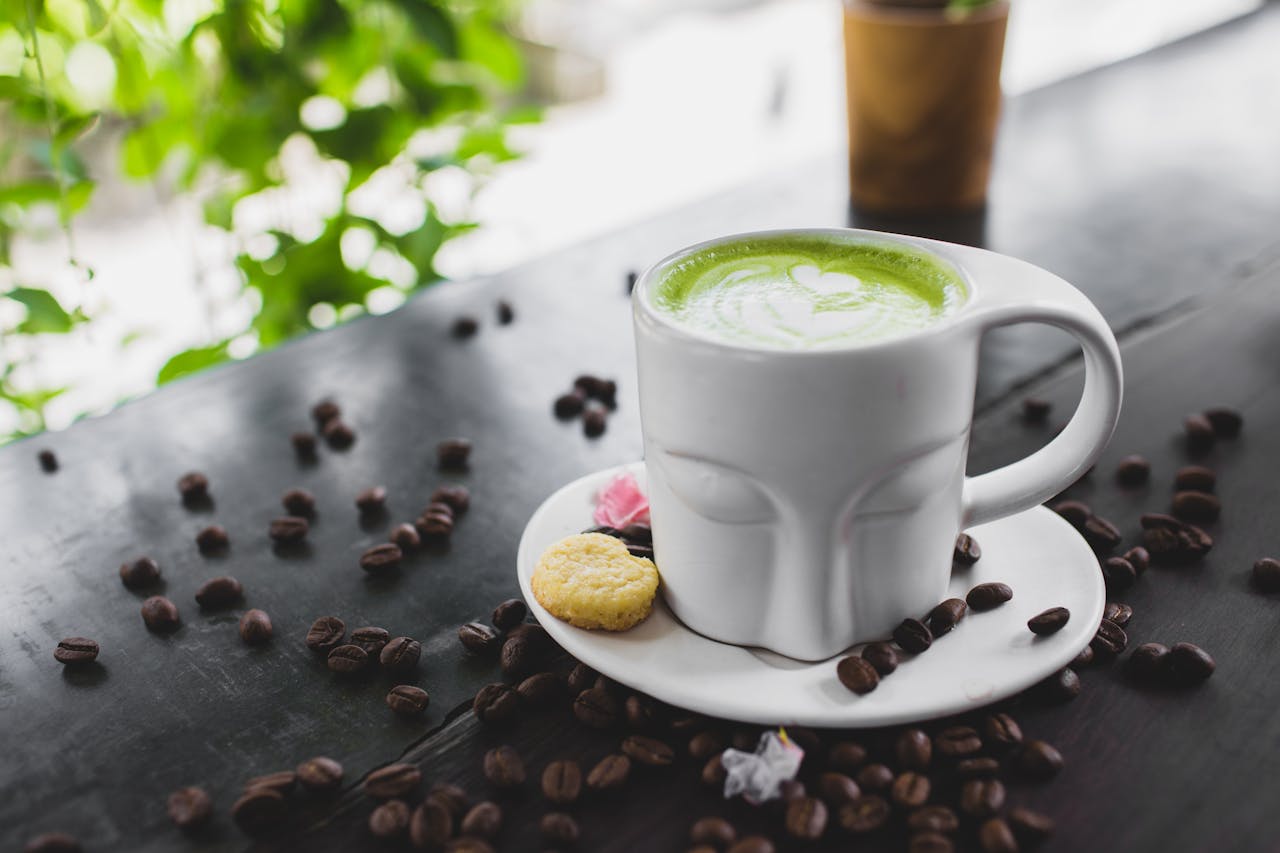
When you’re tired of the same old, same old latte, the matcha latte offers the perfect, indulgent alternative. This Japanese green drink not only looks super cool but tastes delicious. This classic drink is made from only a few simple ingredients: green matcha powder, milk or cream, and (sometimes) water. Even though they look fancy, making a matcha latte at home is much simpler than you’d think. Below, learn how to make a matcha latte in under five minutes and how to customize your drink to your specific taste preferences.
What is matcha?

Matcha is a green, finely ground powder made from Japanese green tea leaves from the Camellia Sinensis plant. Using young green tea leaves and making them into powder, this powder is easily combined with water to create a delicious drink. Although matcha tea can be enjoyed alone, a matcha latte brings your enjoyment to the next level by combining matcha tea with a creamy froth. Many people love matcha simply for its delicious taste alone, but it also has a variety of health benefits — thanks to its high antioxidant content. The taste of matcha is often described as “earthy” or slightly bitter.
How to make a matcha latte

While you can certainly still treat yourself to a matcha latte on-the-go, you can also save money and make your own matcha lattes at home in just a few simple steps. You don’t need to be a Starbucks barista for this one or have any specialized kitchen equipment, either. Here’s what you’ll need:
Ingredients
- 1/2 to 1 teaspoon matcha powder
- 1/4 cup of coconut milk, warmed milk, or cream of choice (or plant-based alternative milk)
- 1/4 cup hot water
- Sweetener, if desired (stevia, maple syrup, honey, etc.)
Method
- Before starting, mix up your matcha powder with a spoon to ensure there are no clumps.
- Measure out the desired amount of matcha powder and add it to a large mug. Add hot water and whisk briskly for about 30 seconds until a froth is formed. This can be done manually or you can use an electric frother if you have one handy.
- Take a sip and adjust accordingly to your taste preferences. Adding more water will create a softer taste. From here, you can also add the desired amount of sweetener to taste and add the warmed milk or cream.
Choosing a matcha powder

Part of making a delicious matcha latte is starting with a high-quality matcha powder. With so many brands on the market, it can be tough to know where to start. Premium matcha frequently comes from Japan, so be sure to check where your matcha is imported from. The climate and the soil in certain cities in Japan, such as Nishio or Uji, are conducive to quality matcha powder. As you shop, also pay attention to the color of the product. Authentic matcha powder has a very bright, vibrant green color.



